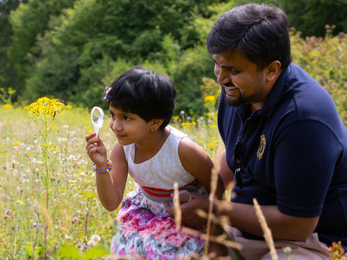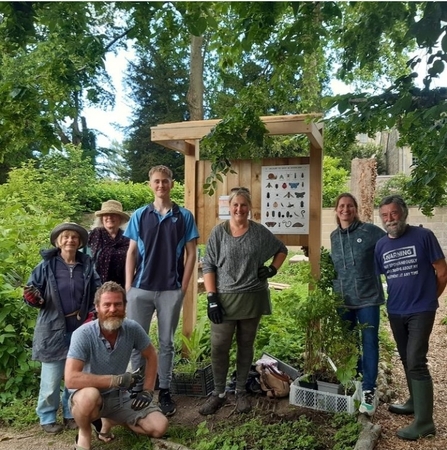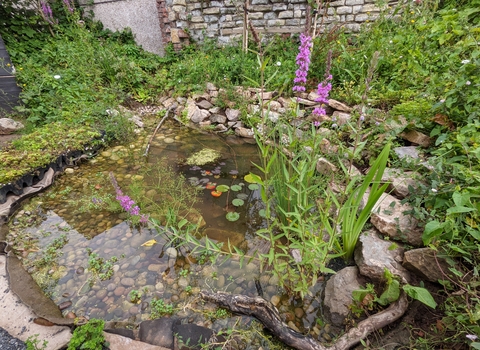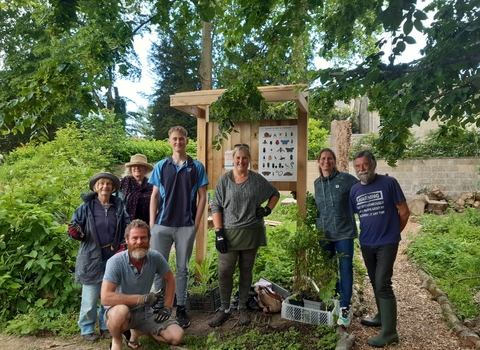Team Wilder Safeguarding
Safeguarding Guidance
As a charity working with children and adults at risk, we have both a legal and moral obligation to ensure that all our participants are kept safe from abuse and neglect. Whether this is taking part in a local activity, a community event as part of #teamwilder, or being a participant in a Wildlife Trust group, all children and adults have the right to enjoy their activity safely. Equally, parents and carers need to feel confident and assured that their children and dependents are being kept safe.
Safeguarding in the context of running groups and activities
Participants should feel assured that they are taking part in well planned and safe activities and events, provided by those who take their safety and well-being seriously. Event organisers have a responsibility to take all reasonable steps to ensure that the activities provide as safe an environment as possible.
Many things can negatively impact on someone’s experience of an event, from boredom to homesickness to poor leadership and abuse. Although incidents of serious poor practice do occur at events, the majority of incidents are lower-level concerns and often associated with more general practicalities e.g. toilet accessibility, refreshment provision, transport and inappropriate clothing for the task. However, low-level concerns can often escalate into more serious situations if not addressed and resolved; making it very important that all staff and volunteers are prepared and able to respond sensibly and appropriately if situations arise.
Concerns can come to light in different ways:
- You may directly observe worrying behaviour by a child or adult at risk
- A third party may report seeing or hearing something concerning
- Information could be received from a third party e.g. Police or a member of staff that an individual involved with the group may represent a risk to others
- Through safer recruitment practices e.g. concerning content on a DBS check or reference
- A child or adult may choose to tell someone about something that is worrying them or has happened to them – this is called a disclosure
A well-run event or activity with trustworthy and approachable staff and volunteers in charge may provide just the opportunity or trigger for someone to tell about worries they may have, either in their group or in their family/community.
Safeguarding guidance for non-affiliated groups
Non-affiliated groups are community groups AWT may give support and advice to, help in community organising techniques or governance advice etc.
For example, groups who have received advice thorugh TWEAS, Wildlife Champions, My Wild City or specific advice or guidance. This includes community gardens, Friends of Groups, a local community charity, allotment group, Women’s Institute, School group etc. These groups do not use the AWT branding.
| Recommendation | Why? | What this means | Further information |
|---|---|---|---|
| A safeguarding plan /welfare plan for events/activities – could also be called a risk assessment | Minimise risks to all participants and enable everyone to enjoy and participate safely | Ensuring there is safeguarding documentation, that it complies with safeguarding legislation and best practice and that all staff and volunteers know the plan |
The NSPCC website Local Safeguarding Board |
| A lead for safeguarding within your group | Someone who champions safeguarding and takes the lead for this area in event and activity planning as well as ensuring others receive the necessary training | The lead must be trained in safeguarding and members must know who this person is and how to contact them | The NSPCC or Ann Craft Trust website |
| Safeguarding Policy and Procedure | To set out your group’s responsibility in this area and make it clear how you will keep participants safe. If the group operates online, this should include online safety measures too | A clear and accessible policy with easy-to-follow procedures that is in line with national government guidance and local safeguarding arrangements |
Example Safeguarding Policy by NSPCC Ann Craft Trust (for adults at risk policy templates) |
| Follow safer recruitment guidance | To ensure you are recruiting the right people to work with children and/or adults at risk | If staff and volunteers are working with children or adults at risk they may be eligible for DBS checks to ensure their suitability for the role. Other examples of safer recruitment are checking employment history and references |
Safer recruitment |
| Creating a safe environment for your group |
It is always better to pre-empt and plan, anticipating possible risks and ensuring everyone stays safe. The following questions will help you build a plan: -What are the risks? |
Completion of risk assessments, clear supervision ratios, what to do if a child goes missing, codes of conducts, appropriate consents (including photography), medical and next of kin information | |
| Training | To ensure staff and volunteers are able to recognise and respond to a safeguarding concern | Training for those working with children or adults at risk |
Training is available from a number of different sources: Your Local Children’s Partnership and Safeguarding Adults Board will also offer FREE training. To access this training google your own area followed by Local Children’s Partnership or Adult Safeguarding Board, then follow links on their website to the training section. |
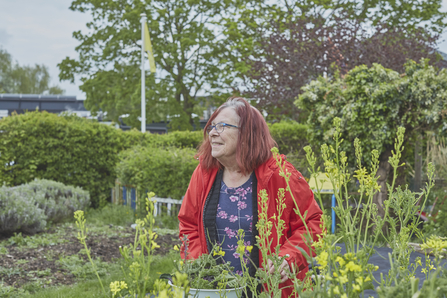
Boundaries
Boundaries are guidelines, rules or limits that define acceptable and unacceptable behaviour for staff, volunteers and participants. Boundaries exist to protect everyone. Establishing clear boundaries is necessary for all groups.
Areas you may need to consider as a group or organisation:
| Area | Advice/guidance |
|---|---|
|
Time |
Know how much time staff/volunteers can offer |
| Abilities | Be clear about what professional skills, knowledge and abilities staff/volunteers have |
| Sharing Personal Contact Details |
Is it appropriate to share personal contact details with participants? You might want to set up a separate email address for volunteers to use, or provide staff/volunteers with a work mobile phone. |
| Social media activities |
What is your group’s stance about interacting with participants online? It may be appropriate to develop guidelines, or to revise them. It’s very common for people to reach out for support through social media, but this is likely to be outside of the boundaries you have set agreed with staff, volunteers and participants. Never share personal social media details with participants or accept friend requests from participants who are children. |
| Staff and participants 1:1 |
Is it appropriate to work 1:1 with staff/volunteers? If so, does the group have appropriate training, policies and procedures on lone working along with risk management procedures and out of hours support? |
| Confidentiality |
Be clear on what you can and cannot keep confidential, and the circumstances in which things that have been shared with you may need to be shared elsewhere. |
|
Mental Health – 1 in 4 people have mental health difficulties. While we are not mental health professionals, our role is to listen and signpost people to professionals for help. |
Be clear that group leaders are not mental health professionals but will signpost people to help when they can. This may mean in certain circumstances they need to share personal information to get people the help they need. For mental health support signpost to:
|
10 Top Tips for Safeguarding at any event
- Have a Safeguarding Plan – outline all of the measures you will implement to keep people safe and share this with staff and volunteers
- Follow Safe Recruitment Guidelines for all staff and volunteers at the event
- Codes of conduct – clear guidelines on expected behaviours for all
- Registration and consent – have a process in place for registering participants and ensuring correct information and consents are in place
- Establish who has overall responsibility for the event
- Establish who has lead responsibility for Safeguarding at the event
- Have clear reporting procedures for staff and volunteers to follow for concerns arising at the event
- Ensure staff and volunteers know where they can access further advice and support in relation to safeguarding
- Consider children and adults with additional vulnerabilities and whether you may need to do anything differently to ensure they can participate safely
- If the event involves travel or overnight stays ensure the Safeguarding plan includes this and considers rotas for during the night and additional considerations such as separate changing rooms.

The Wildlife Trusts
Example Code of Conduct
Why we have a Code of Conduct:
- To make sure all activities and events are safe and inclusive for everyone
- So, it is clear how we expect you to behave and how you can expect staff and volunteers to behave towards you.
- The Code of Conduct applies not only to face-to-face events, but also online events, digital interactions (texting, messaging, email, digital meetings) and any other activity hosted by the group
What we expect from you.
- Treat everyone with respect and dignity
- Listen to others’ views
- Act as a positive role model
- Respect others’ right to privacy – for example, do not share photos and people’s names on social media without permission.
- Help create an environment that encourages everyone to feel comfortable and confident.
- Report any behaviour which makes you feel uncomfortable or unsafe.
Participants should never:
- Be physically violent towards other participants or staff
- Be verbally abusive towards others. This includes being threatening or offensive, actively discriminating against others or making others feel they are less valid because of their ethnicity, class, gender, sexual orientation, disability, political views or heritage.
- Use inappropriate or belittling language that purposefully puts people down.
- Sexually assault or threaten sexual assault to other participants, staff or volunteers
- Bring or use alcohol, illegal drugs or other mind-altering substances when taking part in group activities or events
What you can expect from our staff and volunteers
- All our staff and volunteers will also uphold the Code of Conduct and treat you with respect.
- We will challenge discrimination and promote equal opportunities across our work.
- We will make sure all our activities are inclusive and accessible.
- We will manage behaviour and act appropriately.
- We will respond to all complaints and act in a timely manner.
Breaking our code of conduct
Each incident will be looked at individually and a decision made on the severity. In general, we would expect anyone breeching this to initially receive a verbal warning, but if the behaviour continues (or there are additional breaches of the conduct) they will then receive a second warning and could also be asked to leave.
How to report an issue
If you are concerned about someone’s behaviour or have a complaint against a participant or a member of staff, please speak to XXXXXXX. If you feel you are not being listened to please contact XXXXXXXX
By signing this you are agreeing to our code of conduct. If you have any queries, please do not hesitate to contact XXXXXXX on XXXXXXXX.
Name (printed):
Signature:
Date:

(C) Hannah Bunn
Be part of Team Wilder
All actions for nature collectively add up and creates life for people and wildlife.
Share your actions for nature, like Tom by sharing and tagging @avonwt on social media and
Log your actions for nature on the map

